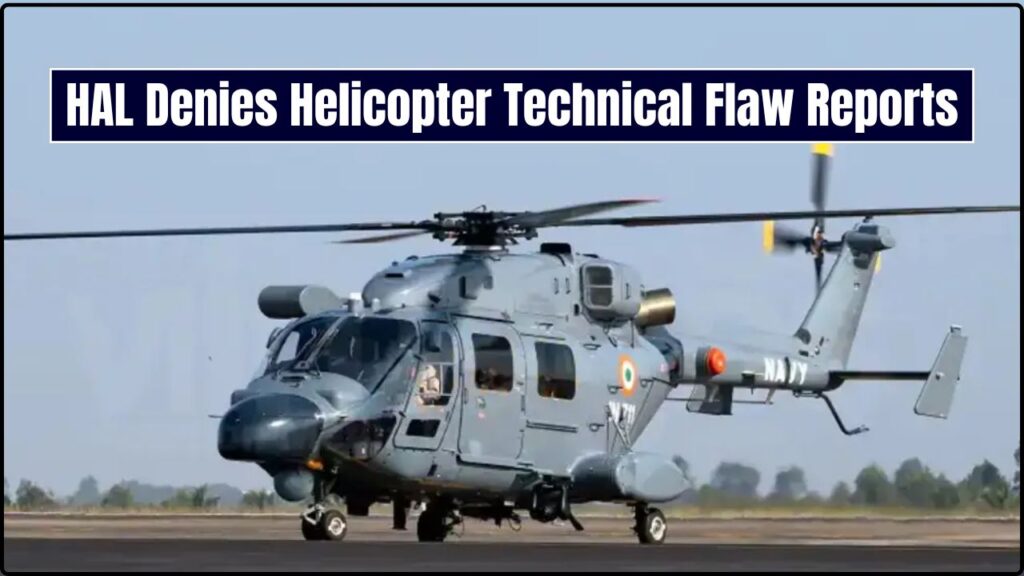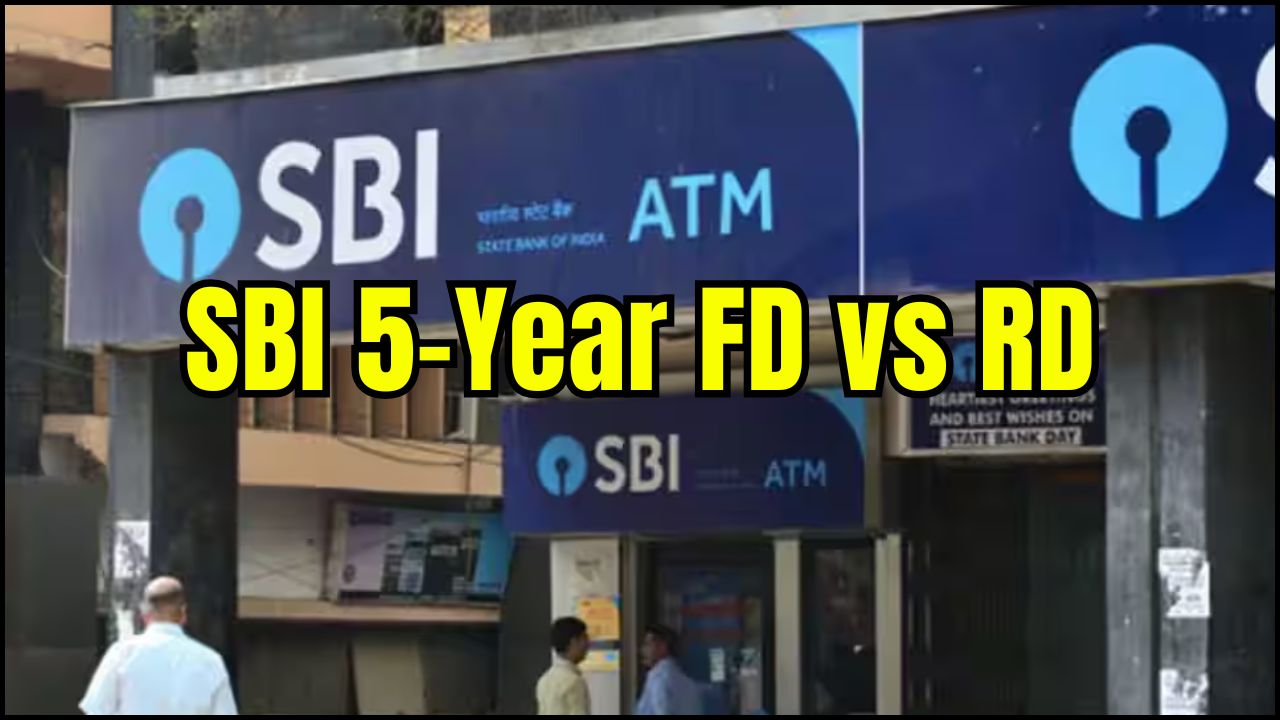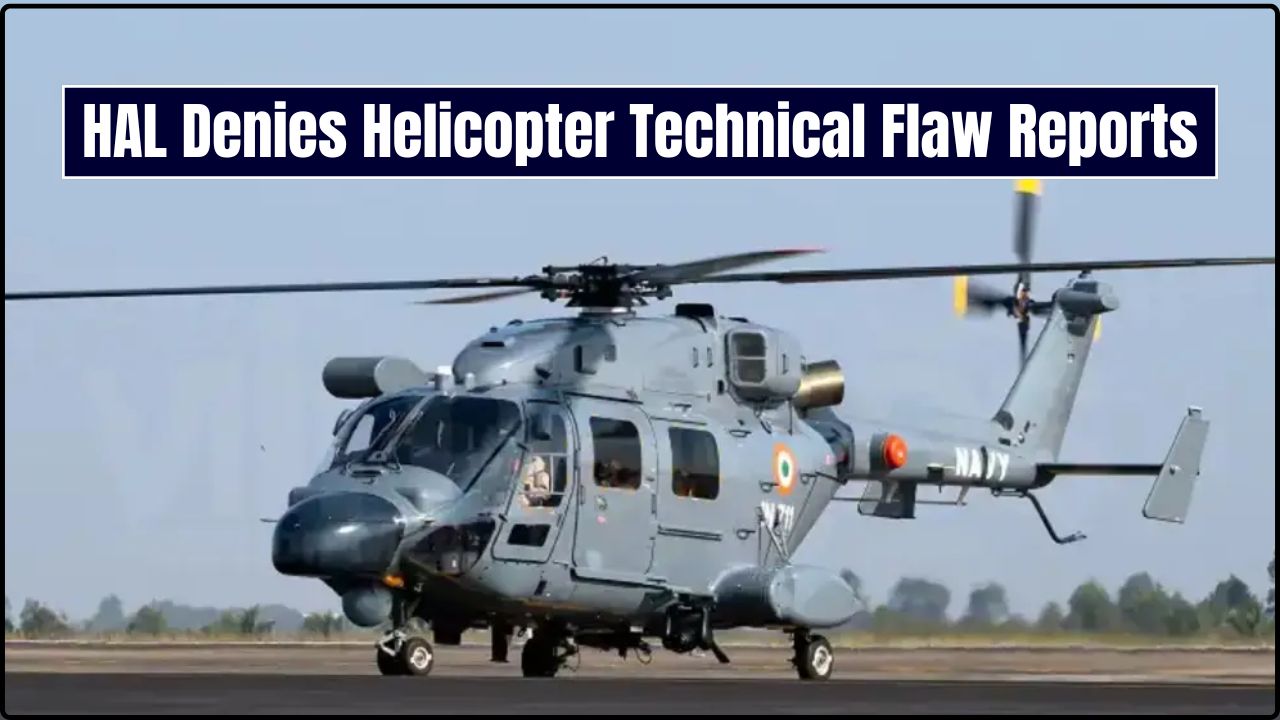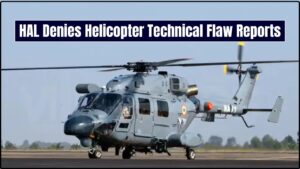
On 7 September 2025, Hindustan Aeronautics Limited (HAL) rejected media reports suggesting a technical flaw in its Advanced Light Helicopter (ALH) Dhruv fleet. The state-owned aerospace company stated that a recent directive for a One-Time Check (OTC) on the Tail Drive Shaft (TDS) was a routine maintenance measure, not a sign of systemic failure. The clarification followed coverage that HAL called “misleading and factually incorrect.”
HAL Clarifies Purpose of the Tail Drive Shaft Check
The Technical Flaw Reports in question—an inspection of the Tail Drive Shaft—was initiated after a minor incident involving a TDS bearing mount on 4 September 2025. The Indian Army, in line with established safety procedures, ordered a fleet-wide inspection. HAL, in its official statement, emphasised that the move was precautionary and not prompted by a design flaw.
“The report published is one-sided and does not represent the facts correctly,” HAL said in a public statement issued on 7 September. “The ALH fleet has an excellent track record and continues to serve across challenging terrains.”
The manufacturer confirmed that it had deployed expert teams to coordinate with military units in carrying out the inspections efficiently and without undue delay.
Track Record of the ALH Dhruv Fleet
The ALH Dhruv fleet, inducted into service in the early 2000s, has logged over 450,000 flight hours. It operates across the Indian Army, Navy, Air Force, and Coast Guard, as well as in several civilian roles. The aircraft is designed for versatility and is used in roles ranging from casualty evacuation to disaster relief operations.
According to HAL, the helicopters have demonstrated high reliability across diverse geographies—from the high-altitude terrain of Ladakh to coastal patrols in the Indian Ocean.
“This fleet has played a critical role in life-saving missions during floods and other natural disasters,” HAL added, reiterating its confidence in the platform’s structural integrity.
Recent Scrutiny Following Incidents
Past Mechanical Faults
Despite its service history, the ALH Dhruv fleet has faced safety scrutiny in recent years. A fatal crash involving the Coast Guard variant in January 2025, caused by a swashplate failure, prompted widespread investigations. A review committee—comprising HAL, the Centre for Military Airworthiness and Certification (CEMILAC), and the Directorate General of Aeronautical Quality Assurance (DGAQA)—was formed to identify the root cause.
After several months of review and flight trials, Army and Air Force variants were cleared for full operational deployment by May 2025. However, Navy and Coast Guard versions remained under observation due to their complex maritime operating environments.
TDS Check Not Linked to Earlier Failures
In its 7 September clarification, HAL explicitly stated that the TDS inspection is not connected to the earlier swashplate issue and must not be interpreted as an indicator of widespread technical faults.
“Drawing erroneous inferences without understanding the technical context undermines the integrity of our aerospace capability,” the statement noted.
Media Responsibility and HAL’s Appeal for Accuracy
HAL criticised the nature of recent news reports, asserting that selective presentation of facts could erode public trust in indigenous defence platforms. It called upon media organisations to practice responsible journalism, particularly in matters concerning national security assets and aerospace technology.
“Misinformation can cause unwarranted panic and damage the reputation of India’s flagship helicopter programme,” HAL said.
The company urged readers and media outlets to rely on official channels for updates and avoid speculative reporting.
Future Course of Action and Ongoing Investigations
The Indian Army, in collaboration with HAL, continues to investigate the 4 September incident. HAL confirmed that fleet operations have not been suspended, and helicopters are cleared to fly once the mandated TDS check is completed.
The Defence Ministry has not issued a statement at the time of writing, but officials confirmed that standard protocols are being followed and that no operational readiness has been compromised.
Conclusion
HAL’s clarification underscores its commitment to transparency, safety, and technical accountability. By framing the TDS inspection as a routine, preventive step, the company has attempted to maintain confidence in one of India’s most significant indigenous aviation achievements. As the investigation continues, operational units remain in close coordination with HAL to ensure mission readiness and flight safety.
















